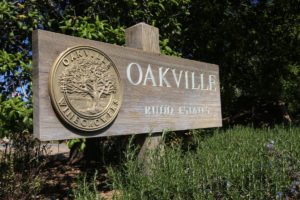
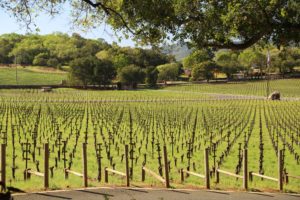
 Rudd Winery is a 55-acre estate located on the eastern side of the Oakville appellation (arguably the heart of some of Napa’s most premium Cabernet Sauvignon). Eastern Oakville and much of nearby Pritchard Hill is composed of reddish iron rich and remarkably rocky soils. While a number of Napa Valley’s most premium wineries grow vineyards on these surrounding soils, perhaps Rudd Estate is one of the most iconic properties for this soil type due to the visibility of its vineyards directly next to the Silverado Trail.
Rudd Winery is a 55-acre estate located on the eastern side of the Oakville appellation (arguably the heart of some of Napa’s most premium Cabernet Sauvignon). Eastern Oakville and much of nearby Pritchard Hill is composed of reddish iron rich and remarkably rocky soils. While a number of Napa Valley’s most premium wineries grow vineyards on these surrounding soils, perhaps Rudd Estate is one of the most iconic properties for this soil type due to the visibility of its vineyards directly next to the Silverado Trail.
This land was originally owned by Steve Girard (died in 2004), a Kaiser Corporation executive who served as president and executive of several Kaiser companies. The Girard family purchased this site in 1974. Steve Jr eventually sold the winery in 1996 to the Rudd family, Leslie and his wife Susan.
Leslie was from Wichita Kansas; his father, Samuel Rudd a career entrepreneur (died 1986) began his career working for the family jewelry business. In 1935 he moved to Wichita and founded The Wichita Cooperage Company. His company were the original manufacturers of wood barrels for Coors Brewery of Golden, Colorado. During World War II he operated Kansas Cold Storage Company.
Sam and his wife Elenore (died 2007) founded Standard Mercantile in 1949 in Wichita. The company was founded as a result of voters of Kansas repealing outdated prohibition liquor laws in 1948. The company would later be called Standard Liquor Corporation (SLC); it is currently known as Standard Beverage Corporation (SBC) and has become the state’s largest beer, spirits and wine wholesaler with multiple distribution spaces located throughout the state. Within their wine portfolio are a number of brands from Napa Valley.
In the 1990s Rudd worked with the Kansas Wine & Spirits Wholesalers Association to change state laws to allow wine auctions. He was successful and with the support of Standard Beverage Corporation, two wine auctions were started in 1999: the Salute! Festival of Food and Wine in Lawrence, KS and the Manhattan KS Flint Hills Festival of Wines.
Elenore was an integral part of the family business. Her early career was spent working for her uncles (the Levand brothers) who owned the Wichita Beacon Newspaper. A scholarship was established in her name at Wichita State University (Eleanor Rudd Scholarship) and is still awarded to first-generation low income students. March 18, 2000 was proclaimed Eleanor Rudd Day in Wichita.
Those interested in further information about the Rudd family and three other families related through marriage, can do so by reading, The Entrepreneurial Spirit in America, published in 2002. Rudd commissioned a genealogist to research the history of these four families: Rudd, Kortz, Finkenstein and Levand. Authors Irene Saunders Goldstein & Eileen Polakoff have done a remarkable job of detailing the journey of these families from eastern Europe to the U.S. and have have profiled numerous family members. As part of this research, Rudd helped organize a huge ‘family’ reunion in 1995 where relatives were able to meet some of their other family members for the first time.
Leslie’s great grandfather Joseph Rudnitsky immigrated from what is now Lithuania to New York and then settled in Chicago with his wife Beckie. According to The Entrepreneurial Spirit in America Joseph’s surname was originally Shapiro, but was changed to Rudnitsky to avoid his being drafted into the Russian army. And this same book also lists 1899 as the first year it was printed that family members changed Rudnitsky to Rudd.
Another family Rudd family member Myron J. Rudd founded the Rudd Box Company in 1920. Remarkably this business is still operating (in Chicago) and celebrated their 100th anniversary in 2000.
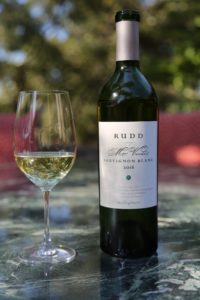 Leslie worked for his father beginning as a salesperson in 1964 after graduating from college eventually rising through the ranks to become the president of the company in 1974. The company is still owned by the Rudd family. Standard Beverage Corporation maintains a major 350,000 square foot distribution center completed in 2022 located just north of Interstate 70 in Lawrence, Kansas; this space can hold up to 1.2 million cases at full capacity. The company also maintains sales offices in Lenexa, serving the Kansas City area; the corporate headquarters and a separate warehouse are located in Wichita. We will visit these spaces sometime in 2024 during yet another trip to the Midwest focusing on visiting places and spaces with strong connections to Napa Valley.
Leslie worked for his father beginning as a salesperson in 1964 after graduating from college eventually rising through the ranks to become the president of the company in 1974. The company is still owned by the Rudd family. Standard Beverage Corporation maintains a major 350,000 square foot distribution center completed in 2022 located just north of Interstate 70 in Lawrence, Kansas; this space can hold up to 1.2 million cases at full capacity. The company also maintains sales offices in Lenexa, serving the Kansas City area; the corporate headquarters and a separate warehouse are located in Wichita. We will visit these spaces sometime in 2024 during yet another trip to the Midwest focusing on visiting places and spaces with strong connections to Napa Valley.
Leslie also invested in several restaurant chains including Godfather’s Pizza and Lone Star Steakhouse (part of Creative Culinary Concepts), eventually taking that company public. Lone Star Steakhouse grew from one restaurant in North Carolina to a national chain of more than 250 restaurants but by 2019 had closed all of its operations. Like his father, Rudd invested in a diversity of real estate in Wichita.
Leslie also operated Dean & Deluca specialty stores (artisan wine, cheeses & provisions) for 18 years after acquiring the franchise in 1996 including opening the St. Helena Dean & Deluca. During his ownership he opened a 35,000 square foot fulfillment center in Wichita.
He sold the franchise to Bangkok, Thailand based Pace Development Corp in 2014. Soon after the sale, Dean & Deluca underwent a remarkable expansion with numerous stores in Asia as well as parts of the Middle East but later developed financial problems. The Dean & Deluca store in St. Helena closed permanently in July 2019 and later opened as a branch of Gary’s Wine which closed in 2023.
Perhaps most recognizable of his Napa Valley holdings was the iconic Oakville Grocery, California’s longest running grocery – since 1881. In late 2018 the Rudd Family sold this store to Jean Charles Boisset.
Just north of Oakville Grocery is the Rudd family-owned restaurant, Press which maintains the most comprehensive Napa Valley based wine list in the valley with vintages reaching back to the late 1950s – the scope of this significant and treasured collection was initially built through the impressive efforts of sommeliers Kelli White and Scott Brenner and later curated by Amanda McCrossin and most recently Vincent Morrow. And every year an invite only event, Napaulee is held, celebrating the end of harvest with a private dinner, a silent online auction and exceptional wines.
Until early 2022, the Rudd family also owned the historical Edge Hill Winery, a stone winery with vineyards near the town of St. Helena which dates back to 1867; this is one of an extremely select number of Napa wineries built in the 1860s still in business including Charles Krug and Schramsberg Vineyards. For a short while before selling to Joel Gott of Gott Wines in January 2022, Edge Hill stopped producing wines but since the transition in ownership, has resumed producing again.
And in 2016 the Rudd family began Crossroads by Rudd, another label focusing on wines produced from their estate vineyards (Oakville and Mt. Veeder). This brand is named in homage to Rudd’s location on one of the crossroads in Napa Valley (Oakville Cross Road) and also perhaps in regard to the generational transition of the family businesses. Wines bottled under this brand are sold both direct and through select national distribution.
Leslie’s philanthropic work is noteworthy; he established The Rudd Foundation in 1998; based in Wichita, they support a variety of causes including creating scholarship opportunities for Kansas based students and funding programs to improve diets around the world. The UConn Rudd Center for Food Policy & Health part of the University of Connecticut in downtown Hartford carries his name. Locally The Rudd Center for Professional Wine Studies is located at the Culinary Institute of America’s Greystone Campus in St. Helena and the Rudd Performing Arts Classroom/center is located at St. Helena High School.
There were very few vintners so well connected to the fabric of Napa’s wine and culinary worlds as Leslie. His entrepreneurial spirit attracted a wide range of wine and culinary projects. His influence in Napa Valley has been deeply felt including by a number of Napa vintners and vineyard owners. Leslie Rudd passed away in early May 2018. He is greatly missed by many in the valley and beyond.
After Rudd’s passing, his daughter Samantha assumed control of their Napa Valley businesses.
The Vineyards/Estate
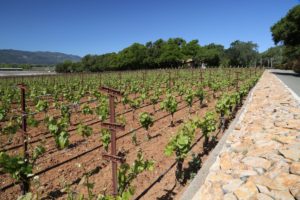
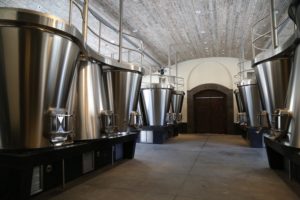 Their Oakville estate vineyards are visually among some of the most well-manicured vines in all of Napa Valley. The grapes near the winery are trellised using Vertical Shoot Position (VSP) allowing tight spacing of the vines. Their vineyards are farmed organically by their in-house vineyard management team. David Abreu originally planted and managed the vineyard. During certain months sheep are allowed to roam through parts of the vineyard, grazing the cover crop. In 2018 several sections of the vineyards were replanted to additional blocks of Cabernet Sauvignon. A tiny block of grapes was also removed, making way for a garden.
Their Oakville estate vineyards are visually among some of the most well-manicured vines in all of Napa Valley. The grapes near the winery are trellised using Vertical Shoot Position (VSP) allowing tight spacing of the vines. Their vineyards are farmed organically by their in-house vineyard management team. David Abreu originally planted and managed the vineyard. During certain months sheep are allowed to roam through parts of the vineyard, grazing the cover crop. In 2018 several sections of the vineyards were replanted to additional blocks of Cabernet Sauvignon. A tiny block of grapes was also removed, making way for a garden.
In addition to the Oakville Estate, the Rudd’s own 88 acres on Mt. Veeder (at about 1,600 feet), the Abel 1833 Vineyard, also home of Rudd Farms is an organically farmed garden that is now closed but used to supply seasonal produce and various ingredients to Oakville Grocery as well as Press. In 2017 the Mt. Veeder fires burned onto the property but did not destroy their vines. A number of animals were raised here including sheep, chickens, dairy goats and turkeys. In addition, grapes are also grown here including some very unique varieties for the Napa Valley such as Ribolla Gialla and Sauvignon Gris (a clonal mutation of Sauvignon Blanc). While the Oakville estate focuses on growing Bordeaux red varieties, the Mt. Veeder property focuses on white varieties.
Visitors to the Rudd estate will marvel at the diversity of vegetation and creative landscaping. A number of olive trees grow on site as they do make limited production olive oil each year. Several intimate tasting spaces include ‘the greenhouse’ and a room overlooking the picturesque pond. One can easily forget they are in the heart of Napa Valley with time spent among this oasis.
The Toolbox
Referring to the winery as The Toolbox reflects their philosophy of wine making as a craft; The Toolbox was first used for their 2016 vintage. Sitting on the footprint of the old Girard Winery, it was completely renovated by Howard Backen (died 2024) of St. Helena & Sausalito based Backen, Gillam & Kroeger Architects. The interior features state of the art wine making tools including a number of custom tanks. The concrete tanks were built onsite – in part using cobble quarried from the property added to the concrete.
The steel tanks are visually intriguing, but their unique designs play an important role during fermentation and are one of the many ‘tools’ the wine making team can utilize for fermentation. Their shape can influence the style of the wines and or specifically be used depending on which part of the property the grapes are sourced from. One tank shape is inverted, and the other is truncated. A small fermentation room next door contains OXOline barrel mounts – easily facilitating when a barrel needs to be rotated by hand.
The Caves
The original subterranean footprint of their cave was 2,000 square which was already built at the time of the Rudd’s purchase. Later, Leslie had the cave greatly expanded; today it is approximately 20,000 square feet. And the pretty iron colored rock walls that surround parts of the property were built using the cave spoils.
Rudd Winery was the first winery in Napa Valley to incorporate the use of portable concrete tanks (eggs) in the early 2000s. Napa wineries had been using concrete for fermentation prior to this but were permanently installed vats such as the ones up at Mayacamas Winery. And starting in 2016 the wine making team began making some wine in Italian made clay amphora vessels.
A self-contained room within the cave houses Rudd’s personal wine library as well as Rudd library wines. This room contains a formidable collection of vintages from winery heavy weights ranging from some of Napa’s top wineries to First Growths from Bordeaux, France.
The Wines
Upon acquiring the Oakville property, vines were replanted in 1996 to red Bordeaux varieties including Cabernet Sauvignon, Malbec and Petite Verdot. Until the vines matured, the first two vintages of Rudd wines (1998 and 1999) were sourced from vineyards at Jericho Canyon in Calistoga and were made by founding winemaker David Ramey. Long time winemaker Charles Thomas crafted the wines for several years following Ramey. The first vintage of Rudd from the estate was in 2000.
The focus of the Oakville Estate is on two wines each year, Samantha’s Cabernet Sauvignon, named after Leslie and Susan’s daughter and the Estate Red. A Sauvignon Blanc is made from their Mt. Veeder vineyard and a white varietal blend, Susan’s Blanc is only made during the most highly regarded vintages.
Rudd
The wine making for their Sauvignon Blanc incorporates a variety of fermentation and aging vessels including stainless steel, concrete eggs and both neutral and new French oak barrels. And unlike many Sauvignon Blancs which are quick to market, their Sauvignon Blancs are structured so they certainly can be consumed upon release, but these are also age-worthy wines. The 2016 Rudd Mt. Veeder Estate Sauvignon Blanc is golden straw color in the glass; it shows a sensory blanket of red apple and pear notes. Supple from start to finish this wine is well balanced with bright acidity but without a tartness often associated with this variety. It shows notes of citrus and hints of mineralities – especially on the finish.
Some of our favorite Napa Sauvignon Blancs have either been from a combination of both cool and warm weather vineyards or are blended with Sémillon. The 2014 Rudd Mt. Veeder Estate Susan’s Blanc was made with grapes from their Mt. Veeder vineyards; this wine is a blend of 40% Sémillon, 28% Sauvignon Gris and 32% Sauvignon Blanc. It was fermented and aged entirely in concrete eggs. Attractive aromatics include tropical overtones with pineapple and citrus blossom along with an orange zest. The palate shows a somewhat briny or saline texture; this wine has a wonderful roundness but not a heaviness. Very clean finish. We tried a subsequent vintage of Susan’s Blanc; it was dominated by Sémillon. For those that enjoy wine made from Sémillon, these various vintage bottlings are highly worth seeking out.
The 2018 Rudd Mt. Veeder Leslie’s Blend is deep ruby and nearly opaque; dark and layered, the nose reveals old cedar, blackberry, dark plum, bramble, petrichor and a hint of cocoa powder deep in the aromatics. The palate is equally dark, layered and savory. The densely packed tannins are gravelly, grainy and sport a moderate to heavy mountain grip. They have perhaps have been softened with time in the bottle; for reference we tasted this 6 years post vintage. The finish lingers with crushed dark pepper, smoked meats, a woodsy spice, dried sage and a persistent dusty attribute which soon pulls ahead of the fruit. Packed with character, flavor, texture and dark spices, this wine would show nicely with a well-marbled tri-tip on the BBQ. It has loads of life ahead of it still. This vineyard is located at an elevation of between 800-1600 feet.
The 2013 Rudd Oakville Estate Red is a remarkable wine; it has depth and balance both on the bouquet and palate. It is a wine you don’t want to stop smelling. The bouquet features well-layered aromatics including an elegant dark fruit blackberry and boysenberry profile along with a subtle thread of vanilla sweetness and a hint of cedar box. The palate is primarily dark fruited and accompanied by a dusty nuance towards the finish. We gravitate towards wines such as this one where the tannins are pronounced but without any harsh edges. They are grainier and denser in their textural feel rather than coarse and gritty. Somewhat dry, they anchor an extended finish. A combination of vintage and style will ensure this is a very long-lasting wine.
The 2014 Oakville Estate Samantha’s Cabernet Sauvignon shows a diversity of aromas including a sweetness of dark fruit, notes of tobacco, a hint of sage and an elegant cedar box nuance. Supple on the entry and seamless through to the finish, this wine is quite approachable in its youth. Superbly balanced, the finish shows polished and integrated tannins with a hint of lingering vanilla.
Crossroads by Rudd
The 2022 Crossroads by Rudd Mt. Veeder Napa Valley Sauvignon Blanc is medium golden in color; the buoyant and bouncy bouquet sports aromas of chamomile, honeydew melon and assorted herbal notes including lemongrass, lemon zest, and kaffir lime leaf. Minerally across the palate, this wine offers flavors of pomelo, green apple, kiwi that is not yet fully ripe, grapefruit and passion fruit. The acidity is refreshing and leaves a mouth watering sensation which immediately begs another sip. The palate delivers an almost briny or saline attribute, not necessarily from the mouth feel but from the acidity. Crisp, clean and balanced. Tasting this immediately made us want to pair it with some sort of shellfish, raw oysters or one of our favorite Thai raw shrimp dishes known as goong che nam pla. This wine is a fine example of the inherent varietal characteristics of Sauvignon Blanc but also the freshness that Mt. Veeder can express due to both its elevation and southern location in the valley.
The 2021 Crossroads by Rudd Oakville Napa Valley Cabernet Franc is deep ruby in color with purplish tinges on the rim of the glass; the bouquet offers some floral overtones including of violets and lilacs along with boysenberry preserves, blackberry and raspberry. Ripe, yet also elegant the bouquet expresses very little of the spice characteristics that is often associated with this variety, especially from cooler weather sites. It is savory on the palate in terms of the interplay between acidity, texture and herbal notes. It reveals flavors of plum, dried herbs including sage, pink peppercorns, dried bay leaf and a persistent dusty and earthy character. If we didn’t already know this wine was from grapes grown in Oakville we might have pegged it as Rutherford in a blind tasting. Close enough, right? The tannins are gravelly, lightly chewy and linger well beyond the fruit in its youth 3 years post vintage at the time of our tasting. Part of this wine was aged in terracotta amphora vessels.
The 2021 Crossroads by Rudd Mountain Blend Mt. Veeder Napa Valley is a blend of Merlot and Cabernet Franc. This wine is deep ruby and opaque in the glass; the attractive bouquet offers scents of violets, dark licorice, black cherry at the peak of ripeness, cassis, bittersweet chocolate and a very subtle hint of dark pepper. Let this wine breathe especially; you will be rewarded with more fruit. Balanced, bright and refreshing across the palate, it is still a bit tightly wound in terms of its textural feel; the tannins are granulated, pixelated and fully envelope the palate, beyond after the fruit dissipates on the finish. On the palate there are flavors of plum, blackberry, crushed pepper and a highly noticeable dusty and highly persistent chalky character. Give me this wine, a BBQ, a warm summer Napa evening without any fog and a cut of Wagu filet mignon.
The 2021 Crossroads by Rudd Oakville Napa Valley Cabernet Sauvignon is deep ruby and opaque in the glass; on the bouquet there are elegant aromas of blackberry, boysenberry, cherry and dark plum and a note of dark chocolate and a minerally character. We found the bouquet to be primarily focused on its fruit with the influences from its barrel aging a much lighter complementary character. This is a robust bottling in terms of both flavor and texture. On the palate there are flavors of dark cherry, blackberry, plum and boysenberry accompanied by sage and other assorted dried herbs. The firmly gripping finish features chalky, chewy, dusty, earthy and drying, but already rounded tannins. And a lingering brightness from the acidity. We can think of a number of cheeses that would pair well with this wine including aged gouda containing plenty of calcium crystals or a hard cheddar. This wine was aged in 53% neutral French oak and 47% new French oak barrels.
The 2018 Crossroads by Rudd Cabernet Sauvignon is a thoughtfully made wine; the grapes for this bottling were harvested from 15 separate picks. The wine was aged in 54% neutral French oak, 38% new French oak, 4% terracotta amphora, and 4% stainless steel vessels. This wine is deep ruby and nearly opaque in the glass; the nose is initially shy and needs some time for the aromatics to evolve in the glass. They offer scents of dark raspberry, blackberry, red plum, dry earth and a hint of dark chocolate. Easy drinking but packed with layers of flavor, this wine offers notes of cherry, currant, raspberry, blackberry and dried sage. The grainy tannins fully coat the palate with a light to moderate and dusty grip. They anchor a bright and lively finish with their textural grip far outpacing the fruit. Savory. Mouth watering. Pair with a lighter cut of beef, such as a flank steak.
—
Total annual production of the Rudd Estate wines is around 2,500 cases. A visit is for serious wine enthusiasts and collectors. For more information or to join their allocation list, visit: www.ruddwines.com or to purchase wines from Crossroads by Rudd, visit: www.crossroadsbyrudd.com.
Estate/Winery
Rudd Performing Arts Classroom, St. Helena High School

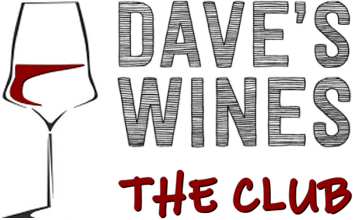





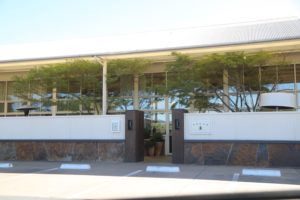
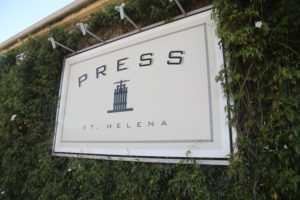
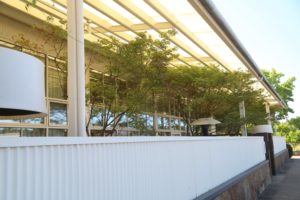
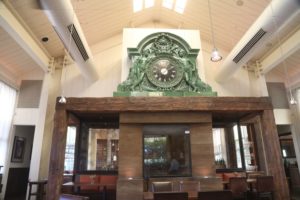
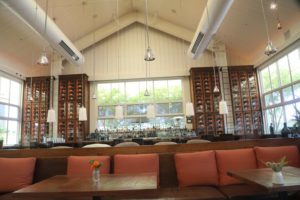
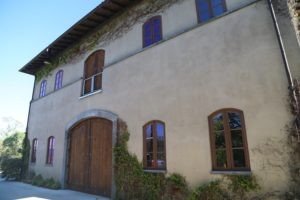
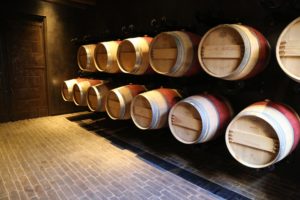
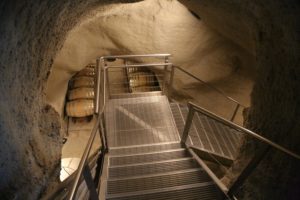
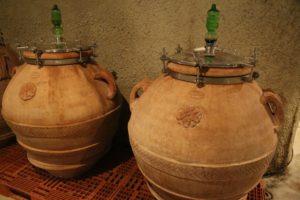
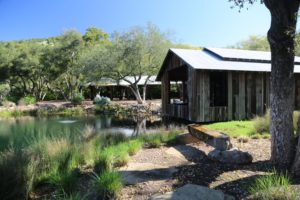
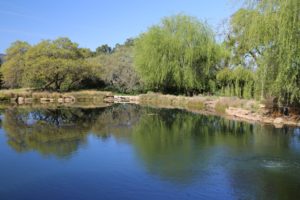
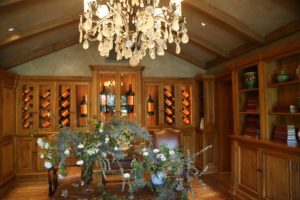
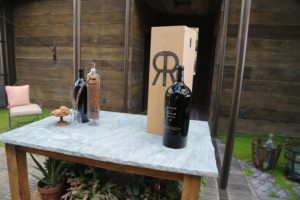
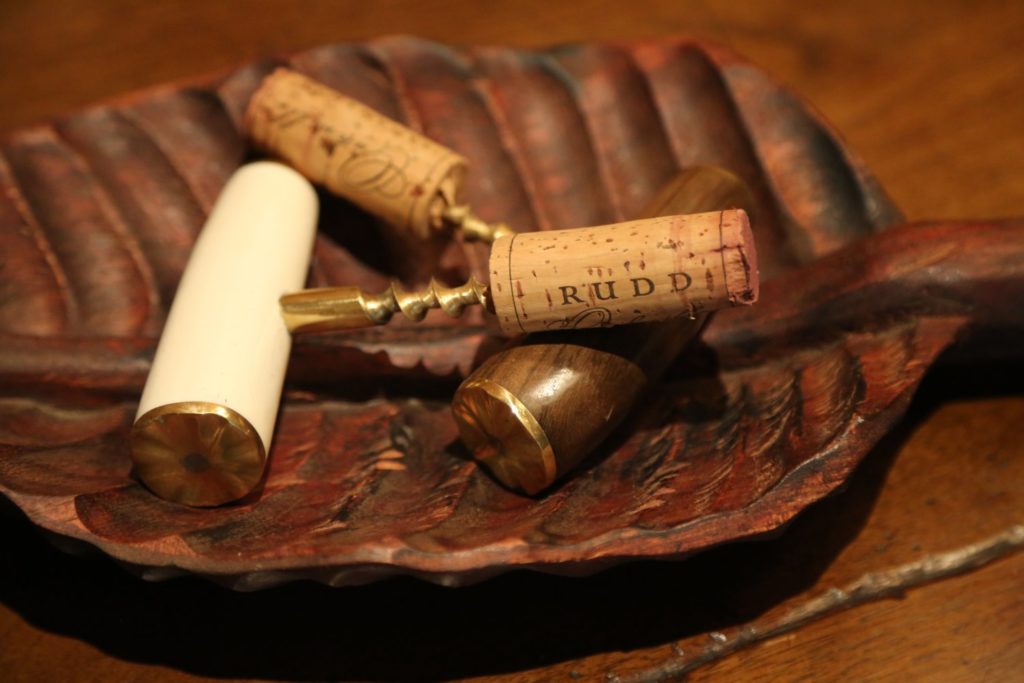
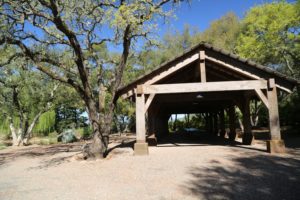
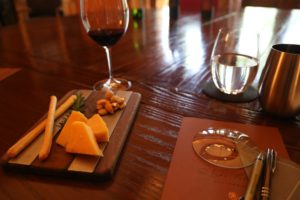
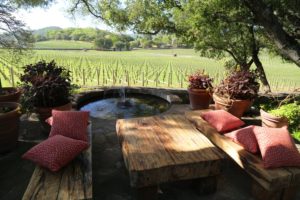
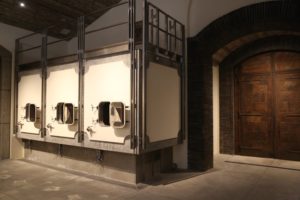
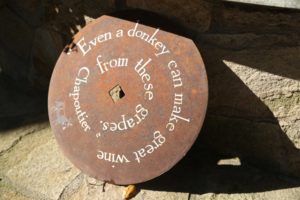
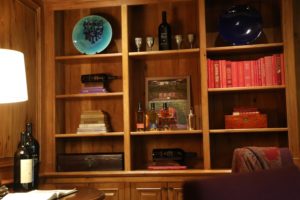
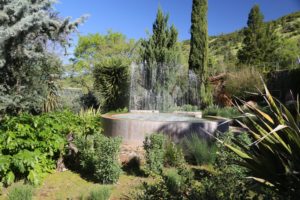
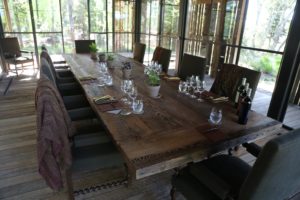
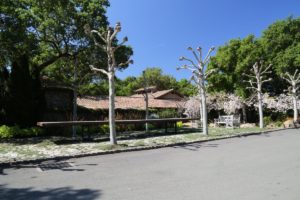
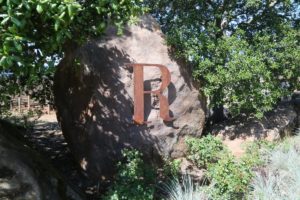
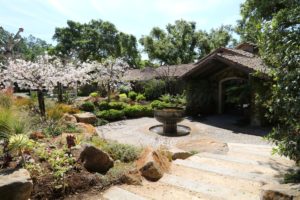
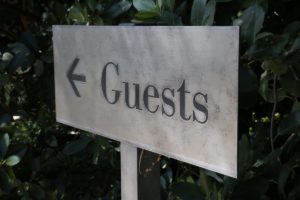
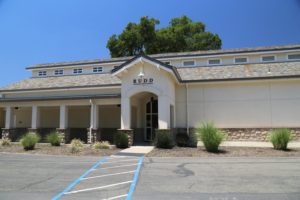
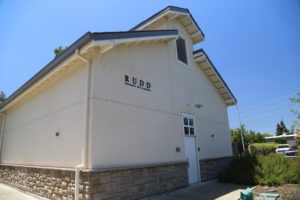
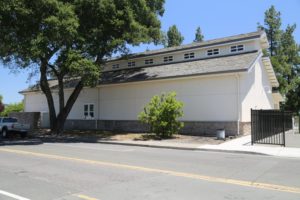
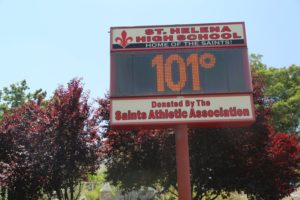
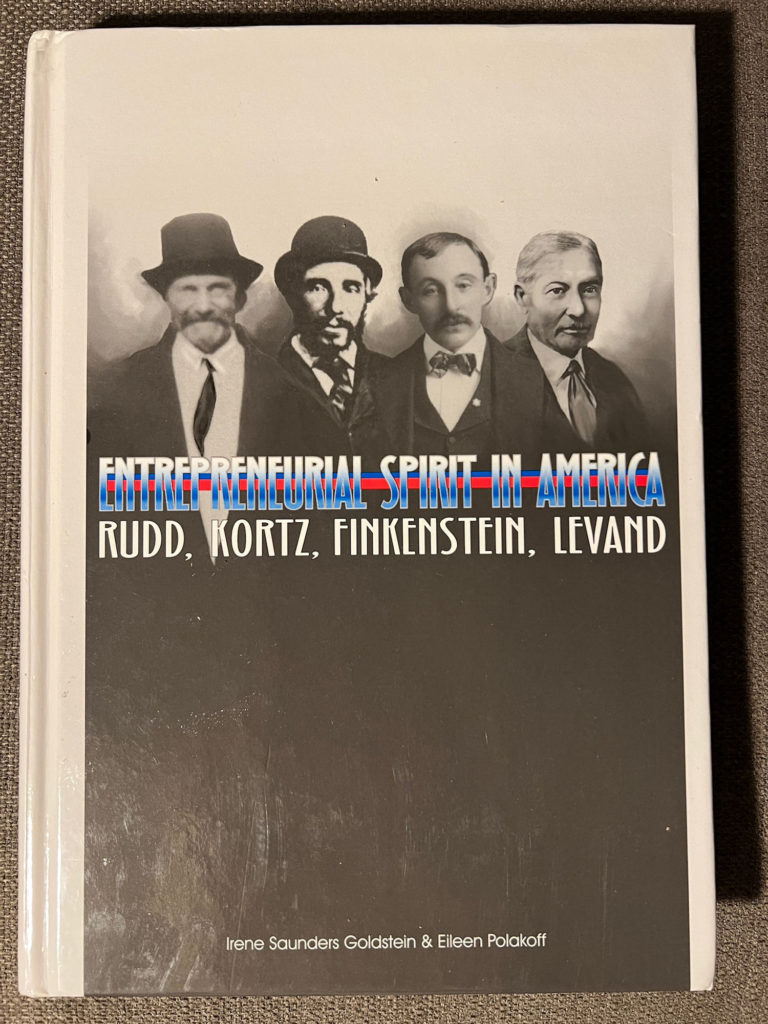
I understand the Rudd’s are seeking a Personal Assistant?
Please view my professional website to learn more about me and how I can possibly help the family.
Thank you,
Anna Beede
Annabeede.com
For Macy,
Dear Macy, I am a RRV grower. A friend of PATRICK Sullivan and an admirer of the Rudd vineyard. I put in and managed several small, home vineyards in Napa Valley during my years managing small properties. Now retired, and tired, I have my home vines in Sebastopol where I planted a small block of Bordeaux vines. It was my testing field so I could keep an eye on many of the Cab Sauv, Merlot and Cab Franc selections for my clients. I started in 1980 with just UC Davis clones, 4 and 8. i Planted some 7, and 15 later then 337, 341 much later. The Merlot is all 181,there are just a few and Cab Franc is just all 1. I am curious about the See clone, 169 and 191 if you have any experience growing these and what these vines are like and their wines?
Now after not making any wine myself since 2005 vintage I am making a small batch. Always wondering if the clones have as great an impact as the site. I have been visiting wineries in Napa and since I don’t know many vineyard managers there all I have been treated to are the tasting room personnel, not the best source of information about grapes. I contacted Beatrice at Edge Hill thinking of arranging a visit there. She mentioned your name and said Edge had no visit arrangements. I thoughttheirvines would be of the newer clonal selections and that might be a good place to see the vines in the field I have been very surprised over the years of a lack of interest from many wine makers in keeping up with the nursery changes. And even more so by a somewhat lack of interest in walking the vine rows.
I’ve planted so many sites since 1970, though mostly small in size, so many varieties and clones, so many different spacing and training styles, now it’s time to enjoy the wines. My wife and I have traveled to France, Spain, Portugal, Italy, Germany, Greece and New Zealand to visit vineyards,wineries and the people. The common thread there has been a much closer connection to the vineyards than here in US. Often ratingthe vineyard not the wine.
Hope to get over the Napa this spring maybe meet you for a coffee and pastry in St. Helena and hear of your adventure in the vine rows.
Best regards,
Carmine Indindoli
Hi Anna – I hope you connected with the Rudd’s in regard to your search for a personal assistant position.
~ Dave
Carmine – my first or maybe it was second visit to Rudd was hosted by Patrick. Hope you were able to connect with Macy. I’m involved with a small block of Marselan (800 vines) in Calistoga which we planted a few years back. We just harvested a small amount last year and hope to have at least a barrel this coming year.
Edge Hill is now owed by Joel Gott. I need to get back there to update my notes on the changes there.
~ Dave